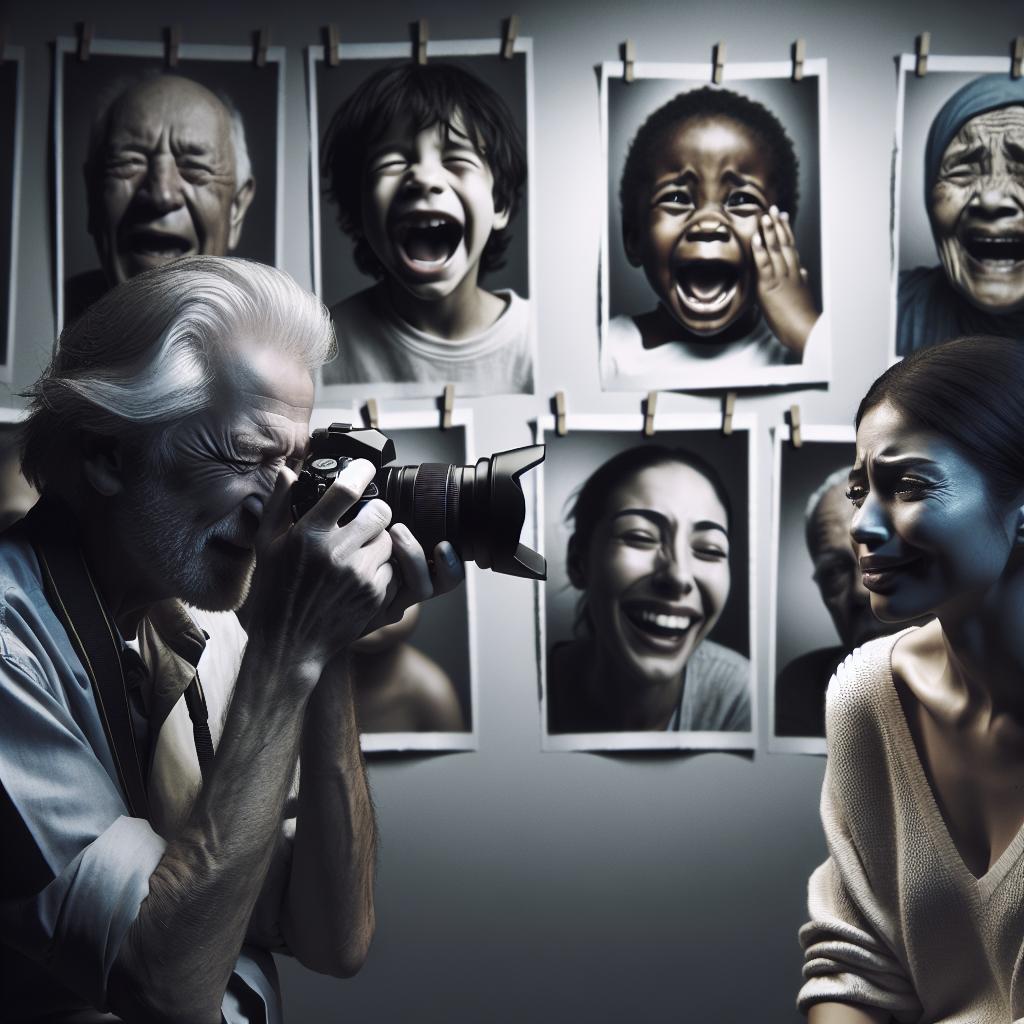“`html
How to Capture Emotion in Photos
Photography is more than just pointing a camera and shooting. It’s about capturing a moment, a feeling, an emotion. This blog post explores the essential elements of emotional photography by delving into the roles of the artist and subject, and examining how various techniques and approaches can affect the outcome of a photo. From choosing between single images and series to manipulating the depth of field with aperture settings, photographers can add depth and context to their shots. Understanding facial expressions and the significance of situational and historical knowledge further aids in creating impactful emotional photographs. These insights can help both amateur and professional photographers evoke genuine reactions and tell compelling stories through their work.
The Artist
The photographer, as an artist, is a crucial element in capturing emotion. It’s not just about technical skills; it’s about the intuition and sensitivity that the photographer brings to the table. An innate understanding of human emotions, combined with an ability to connect with the subject, empowers the photographer to frame a moment that speaks to the heart.
Beyond technical prowess, the artist must possess patience and be attuned to the environment. Observing subtle nuances in a scene can lead to unexpected emotional revelations. Commitment to the craft involves constantly experimenting with styles and perspectives to discover new ways to convey emotion through imagery.
The Subject
The choice of subject greatly influences the emotional depth of a photograph. Capturing genuine emotion requires understanding and anticipating the subject’s feelings, moods, and stories. Building rapport and trust with the subject allows for more candid and authentic moments to be shared.
For portraits, directing a subject should feel natural and comfortable. Encouraging them to share personal stories or thoughts can lead to expressions that reflect raw emotion. In event photography, it’s often about being in the right place at the right time—anticipating pivotal moments and capturing them as they unfold.
Single vs. Series
A single image can be powerful, encapsulating a definitive emotion or mood. With the right composition and timing, one photograph can tell an entire story. However, a series of photos can be equally, if not more, effective in conveying broader narratives and layered emotions.
Creating a photo series requires a cohesive vision and continuity. Each image should contribute to the overarching theme or emotion while standing alone with its own significance. Capturing a series allows for dynamic storytelling, providing depth and context to the emotions being portrayed.
Add or Subtract Context with Aperture
The aperture setting on a camera can dramatically influence the behavior of an image. A larger aperture (smaller f-number) produces a shallow depth of field, isolating the subject from its background. This can distill the emotion by focusing entirely on the expression and demeanor of the subject.
Conversely, a smaller aperture (higher f-number) brings more of the scene into focus, adding context that can enhance or dilute the emotion captured. Depending on the desired emotional impact, understanding how to effectively use aperture to manipulate the background is a vital skill in emotional photography.
Reading the Faces
The human face is expressive, capable of conveying an array of emotions with minimal movement. Effective photographers are astutely aware of these expressions, capturing them with precision. It requires keen attention to detail and timing to freeze an expression that conveys the mood and feeling of the moment.
Besides direct expressions, body language plays a significant role. The tilt of a head, the touch of a hand, or the stance of a body can add layers of emotional complexity to a photo. Combining facial expressions with these subtle cues can result in a more powerful emotional impact.
Situational and Historical Knowledge
Emotional photographs often transcend the individuals captured by resonating with broader contexts. Being informed about the situation and its historical backdrop allows photographers to communicate emotions that are culturally and socially significant. Awareness of the environment enriches the storytelling aspect of photography.
Preparing for shoots by researching the subjects and locations is an invaluable strategy. It not only aids in capturing emotion but also ensures the final images are respectful and authentic to the stories they tell. This deeper understanding often results in photographs that are more profound and meaningful.
Next Steps
| Section | Summary |
|---|---|
| The Artist | The photographer’s intuition, patience, and introspection play essential roles in capturing genuine emotion. |
| The Subject | Connection and understanding between the subject and photographer lead to candid and genuine emotion in photos. |
| Single vs. Series | Single images can capture definitive emotion, while series provide broader narratives and depth. |
| Add or Subtract Context with Aperture | Aperture settings alter depth of field, influencing the emotional context and impact of the image. |
| Reading the Faces | Facial expressions and body language significantly enhance the emotional resonance of photographs. |
| Situational and Historical Knowledge | Understanding the context enriches storytelling and provides cultural and social relevance in emotional photography. |
“`

